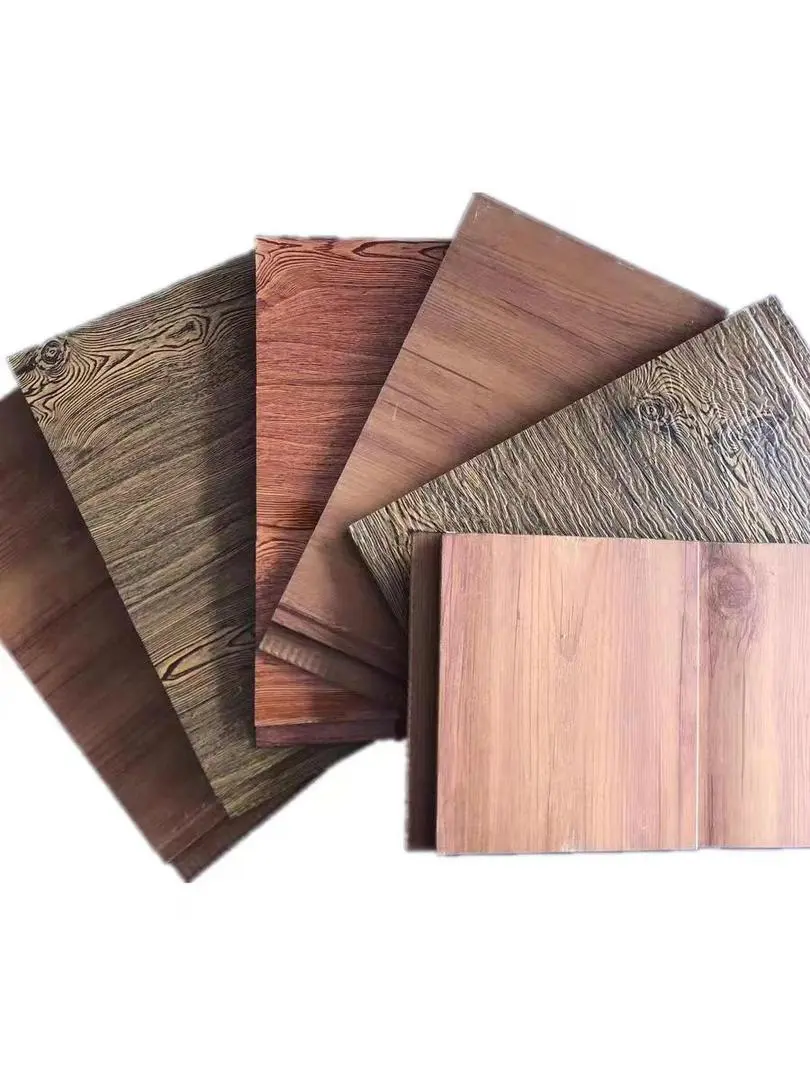The Evolution of Exterior Wall Protection
Traditional Methods vs. Modern Solutions
Historically, protecting the exterior walls of homes has been a challenge. Traditional methods like brick and stone masonry, while durable, often fell short in providing comprehensive waterproofing. These materials, though robust, are porous and can absorb moisture over time, leading to issues such as dampness, mold growth, and structural degradation. The advent of waterproof exterior wall panels marks a significant leap forward in addressing these longstanding concerns.
Modern waterproof panels are engineered to offer superior protection against water infiltration. Unlike their traditional counterparts, these panels create a seamless, impermeable barrier that effectively repels water, preventing it from seeping into the building's structure. This advancement not only enhances the longevity of the building but also contributes to a healthier indoor environment by eliminating moisture-related problems.
Technological Advancements in Panel Design
The development of waterproof exterior wall panels has been driven by significant technological advancements. Today's panels are the result of extensive research and innovation in materials science. They often incorporate multiple layers, each serving a specific purpose. The outer layer typically consists of a durable, weather-resistant material such as metal or high-grade polymers. This is followed by a waterproofing membrane, which acts as the primary defense against moisture.
Beneath these layers, many modern panels include an insulation core, which not only enhances the panel's waterproofing capabilities but also significantly improves the building's thermal efficiency. This multi-layered approach ensures that the panels perform multiple functions simultaneously, offering protection against water, improving energy efficiency, and providing structural support.
Key Benefits of Waterproof Exterior Wall Panels
Enhanced Durability and Longevity
One of the essential points of interest of waterproof outside divider boards is their remarkable toughness. These boards are planned to withstand a wide run of natural challenges, counting overwhelming precipitation, solid winds, and extraordinary temperature changes. The corrosion-resistant properties of materials utilized in these boards, such as high-grade metals and progressed polymers, guarantee that they keep up their keenness over amplified periods.
This durability translates to longevity, with many modern waterproof panels designed to last for decades with minimal maintenance. This long lifespan not only provides peace of mind for homeowners but also represents a cost-effective solution in the long term, reducing the need for frequent repairs or replacements.
Energy Efficiency and Insulation
Waterproof exterior wall panels play a crucial role in enhancing a home's energy efficiency. The built-in insulation layers in these panels provide effective thermal control, helping to maintain stable internal temperatures. This insulation property is particularly beneficial in reducing heat transfer between the interior and exterior of the building, leading to decreased reliance on heating and cooling systems.
The energy-saving potential of these panels is significant. By creating a more efficient thermal envelope, they help reduce energy consumption, leading to lower utility bills and a smaller carbon footprint. This aspect of waterproof panels aligns perfectly with the growing trend towards sustainable and energy-efficient home design.
Aesthetic Versatility and Customization
Beyond their functional benefits, waterproof exterior wall panels offer remarkable aesthetic versatility. Modern manufacturing techniques allow for a wide range of colors, textures, and finishes, enabling homeowners to achieve virtually any desired look for their property. Whether aiming for a sleek, contemporary appearance or a more traditional aesthetic, there are panel options to suit every architectural style.
The customization possibilities extend beyond mere color choices. Many panels can be fabricated to mimic the appearance of other materials, such as wood or stone, while still maintaining their waterproof properties. This versatility allows architects and homeowners to create unique, eye-catching façades that stand out in any neighborhood while benefiting from the advanced protective features of the panels.
Installation and Maintenance Considerations
Efficient Installation Process
The installation of waterproof exterior wall panels is typically more straightforward and efficient compared to traditional cladding methods. Many modern panel systems are designed with ease of installation in mind, featuring interlocking mechanisms or simple fastening systems. This not only reduces installation time but also minimizes the potential for errors during the installation process.
The efficiency of installation translates to several benefits. It can significantly reduce labor costs and shorten construction timelines. For renovation projects, it means less disruption to the occupants. Moreover, the precision-engineered nature of these panels ensures a more consistent and reliable installation, which is crucial for maintaining their waterproofing properties.
Low Maintenance Requirements
One of the most appealing aspects of waterproof exterior wall panels is their low maintenance requirements. The smooth, treated surfaces of these panels are designed to repel dirt and water, making them resistant to staining and discoloration. In most cases, routine maintenance involves nothing more than periodic cleaning with mild soap and water to keep the panels looking their best.
This low-maintenance characteristic is particularly valuable for modern homeowners who prefer to spend less time and money on upkeep. Unlike traditional exteriors that may require regular painting, sealing, or repairs, waterproof panels maintain their appearance and functionality with minimal intervention. This not only saves on maintenance costs but also ensures that the home's exterior remains attractive and protective year after year.
Conclusion
Waterproof exterior wall panels represent a significant advancement in home construction and renovation. Their ability to provide superior protection against moisture, enhance energy efficiency, and offer aesthetic flexibility makes them an essential consideration for modern homes. As we continue to face challenges like climate change and increasing energy costs, the adoption of such innovative solutions becomes increasingly important. For those interested in exploring waterproof exterior wall panel options for their homes or projects, we invite you to contact us at info@sdqsc.com for expert advice and high-quality products tailored to your specific needs.